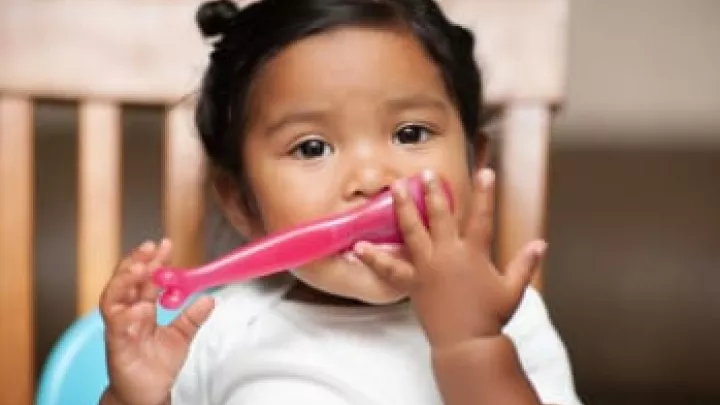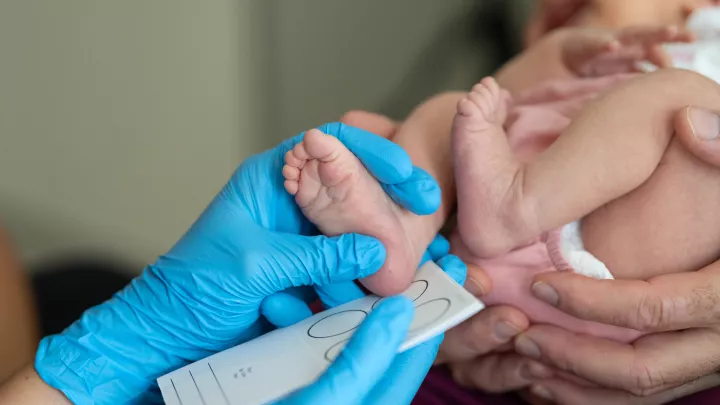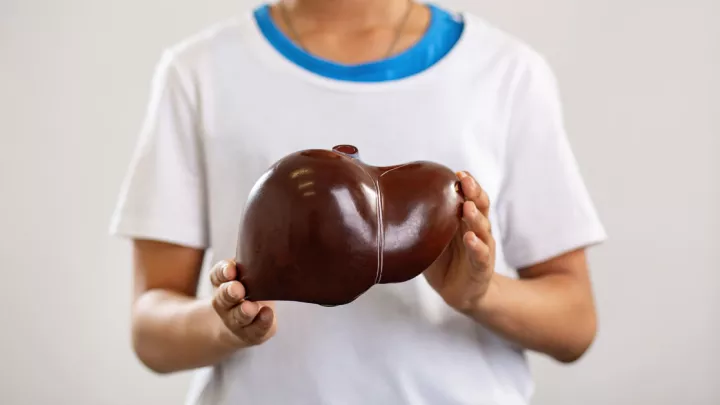
Iron Deficiency Anemia: What It Is and How to Help Your Child
Iron is an essential mineral that helps our muscles work, gives us energy, and powers brain function. It’s important at any age, but especially for children, who need iron to grow.
When a person doesn’t have enough iron in their blood, the body can’t make hemoglobin, which is the part of red blood cells that carries oxygen throughout the body. This leads to fewer healthy red blood cells, and the condition called iron deficiency anemia.

Thomas Coates, MD, is the Chief of Hematology at Children’s Hospital Los Angeles, which helps provide comprehensive treatments for iron deficiency anemia through its Red Blood Cell Disorders Program.
“Iron deficiency anemia is the most common form of anemia. However, even in the absence of anemia, iron deficiency can affect concentration and lead to fatigue,” says Dr. Coates.
“While any kind of new diagnosis can feel scary, this condition is highly treatable, and anemia can typically be resolved with proper supplementation.”
Here's what parents should know about iron deficiency anemia.
Who is most at risk for iron deficiency anemia?
Iron deficiency anemia can be caused by issues with iron absorption, a lack of iron in the diet, or blood loss. Babies and young children require a greater amount of iron as they grow and develop, which puts them at higher risk of developing anemia.
While iron deficiency anemia is most common in younger children, it can also affect older children; for example, teenage girls who lose blood during menstruation. Nutritional iron deficiency is extremely rare in the U.S. in children over 3, and other causes of iron deficiency should be investigated first.
Diet and iron deficiency anemia
Babies get iron from the mother in the last trimester of pregnancy. Babies who are at risk for not getting enough iron are typically premature babies or multiples (twins, triplets, etc.) who have to share the amount of iron given by mom. Babies will get iron from their mom if they’re breastfed, or through fortified formula.
Once babies start to eat, they need to be given a diet rich in iron.
Examples of iron-rich foods include:
- Meats
- Seafood
- Legumes
- Dark leafy green vegetables
- Nuts and seeds
- Eggs
- Fortified grain-based foods like cereal, breads, and pasta
Cow’s milk and iron deficiency anemia
Iron deficiency anemia can also be seen in young children who drink too much cow’s milk. Milk is naturally low in iron and can even prevent iron absorption from other foods due to its high levels of calcium and casein.
Drinking milk before a meal can also cause the child to feel full and not eat enough iron-rich foods. A high volume of cow’s milk can also irritate the intestinal tract and lead to a small amount of hidden bleeding (i.e., iron loss).
Guidance to follow when feeding cow’s milk to very young children:
- Cow’s milk is not recommended for children under 1 year.
- Children ages 1 to 2 can drink 16 to 24 ounces (2 to 3 cups) of whole milk per day.
- After 2 years old, children should be given skim milk.
- Children ages 2 to 5 can drink 16 to 20 ounces (2-2.5 cups) of low-fat or skim milk per day.
- Most milk in the U.S. is fortified with added vitamins and minerals, including iron. Unfortified cow’s milk can be dangerous for babies or children if they get dehydrated from diarrhea, and it also has too much protein, which can lead to obesity later in life.
How do you know if your child has iron deficiency anemia?
Symptoms of iron deficiency anemia include:
- Irritability
- Shortness of breath
- Craving for unusual things, like dirt, paint, starch, ice
- Lack of appetite
- Tiredness, weakness, or dizziness
How to diagnose iron deficiency anemia
To test for iron deficiency anemia, your health care provider will likely conduct a blood test that measures hemoglobin levels and can do blood tests to measure iron.
Symptoms of iron deficiency anemia often overlap with symptoms for other conditions, so it’s important to confirm the diagnosis with your health care provider.
How to treat iron deficiency anemia
The best way to treat iron deficiency anemia is through healthy, iron-rich foods.
Specific examples of iron-rich foods include:
- Apricots
- Chicken and Turkey
- Dried beans, lentils, and soybeans
- Liver
- Molasses
- Oatmeal
- Peanut butter
- Prunes, prune juice, and raisins
- Spinach and kale
Children can experience significant long-term problems if iron deficiency is not corrected, even if their red blood cells and hemoglobin appear normal.
Some of those long-term problems are:
- Decreased response to immunizations
- Decreased ability to learn
- Decreased concentration, attention span, and alertness
- The body’s absorption of more lead (which can result in learning and behavior problems)
In some cases, your health care provider will prescribe iron supplements. Only give the provider-recommended dose and give it with vitamin C-fortified fruit juice to help the body absorb the iron. Never give a child iron supplements without a prescription from your health care provider, because giving too much iron can lead to poisoning.
Top treatment for red blood cell disorders
The Red Blood Cell Disorders Program at CHLA uses a team approach to deliver comprehensive care in a child-friendly environment. The program treats all types of anemia, including rare genetic anemias, complex anemias, and secondary anemias. Families seeking treatment, no matter their diagnosis, can count on personalized treatments, emotional support, clinical trials, and therapies to prevent complications.


